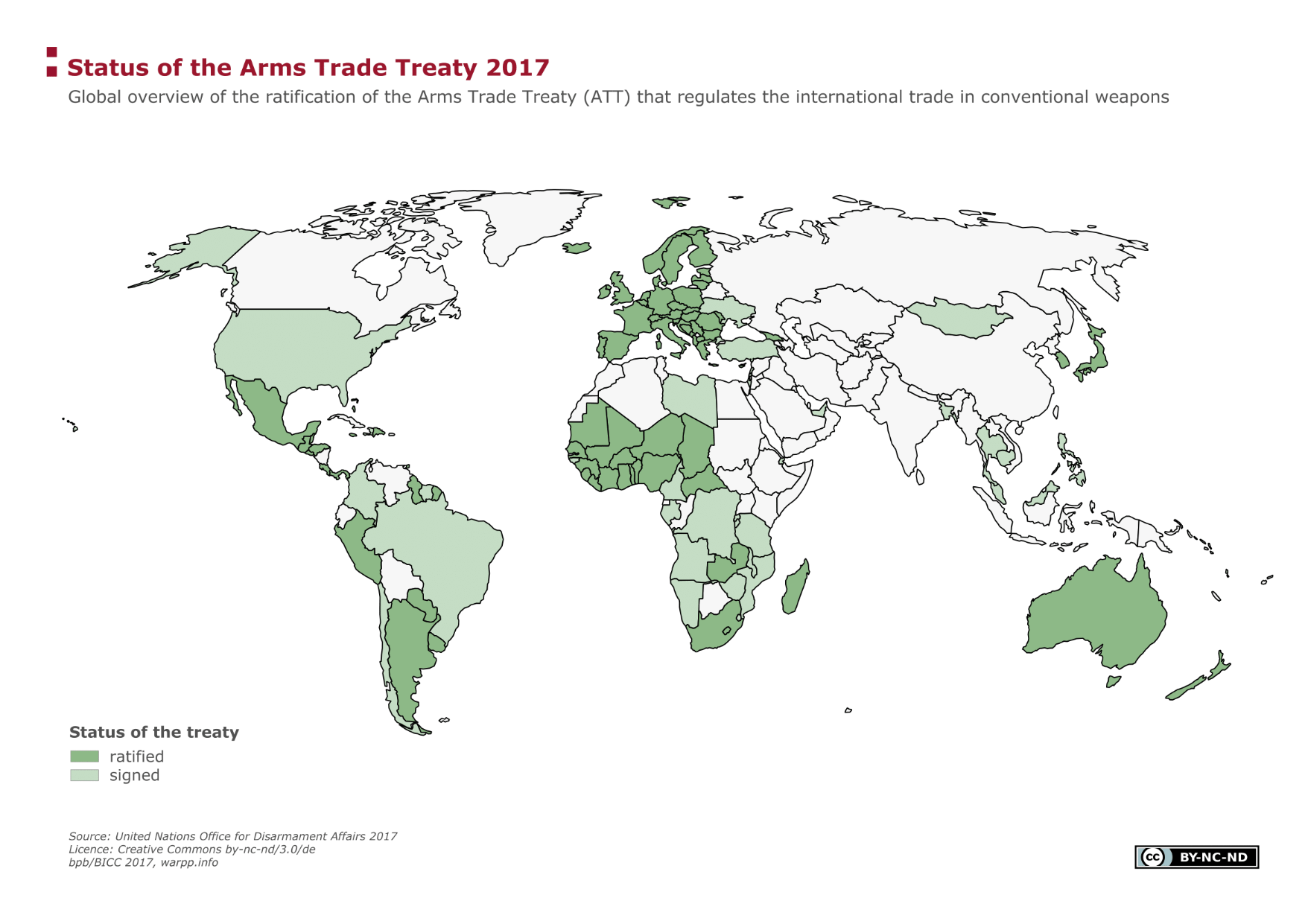Status quo of the Arms Trade Treaty 2017

The map shows the status quo of the Arms Trade Treaty at the time of writing While the international arms trade has so far only been regulated in part and by individual agreements, the ATT, for the first time, deals comprehensively with the trade in conventional weapons, creates uniform minimum standards both for the export and import of battle tanks, armoured combat vehicles, large calibre artillery systems, combat aircraft, attack helicopters, warships, missiles, small arms and light weapons
Facts
At the time of writing, just under 67 per cent of all countries (92 countries on 20/11/2017) have ratified the Arms Trade Treaty. The Treaty that was adopted by the UN General Assembly on 02 April 2013 entered into force on 24 December 2014 after it was ratified by a minimum of 50 countries. Besides the 92 states parties, 38 additional countries have signed the Treaty and thus signalled their interest in becoming a state party themselves.
China, Russia, India and Saudi Arabia - amongst the largest arms im- and exporters worldwide - abstained from voting in 2013 and have so far not signed the ATT. Contrary to the Bush Administration, the Obama government promoted international negotiations and welcomed the UN Resolution in 2013. Yet, the ATT has so far not been ratified by the United States
Terms, notes on methodology or reading aids
The original idea of an International agreement on the trade in weapons leads back to a group of people surrounding Nobel Peace Prize laureate Oscar Arias Sánchez in the 1990s. In July 2012, after a lengthy negotiation process, a legally binding document was first presented at a global conference under the auspices of the United Nations. It was not until 02 April 2013 that the UN General Assembly decided to endorse the international Arms Trade Treaty (General Assembly Resolution A/RES/67/234 B).
Data sources:
UNODA (United Nations Office for Disarmament Affairs) The United Nations Office of Disarmament Affairs was founded in 1998 with the objective of nuclear disarmament and limiting the proliferation of nuclear weapons. Furthermore, the intention was to limit general weapons of mass destruction, such as chemical and biological weapons and to reduce the use of conventional weapons, particularly landmines and small arms and light weapons It also supports the disarmament and reintegration of ex-combatants into civilian life. By means of more dialogue, higher transparency and confidence-building measures, one hopes to achieve these goals.
Status quo and processes of the ATT
For a detailed overview of data and data sources, refer to module „arms control“ as well as the info text on the „Arms Trade Treaty (ATT)“.





